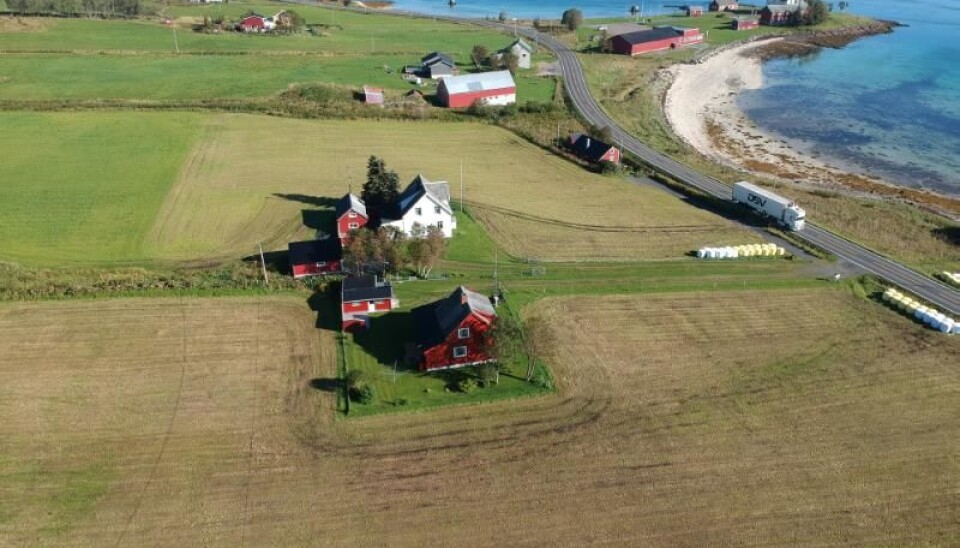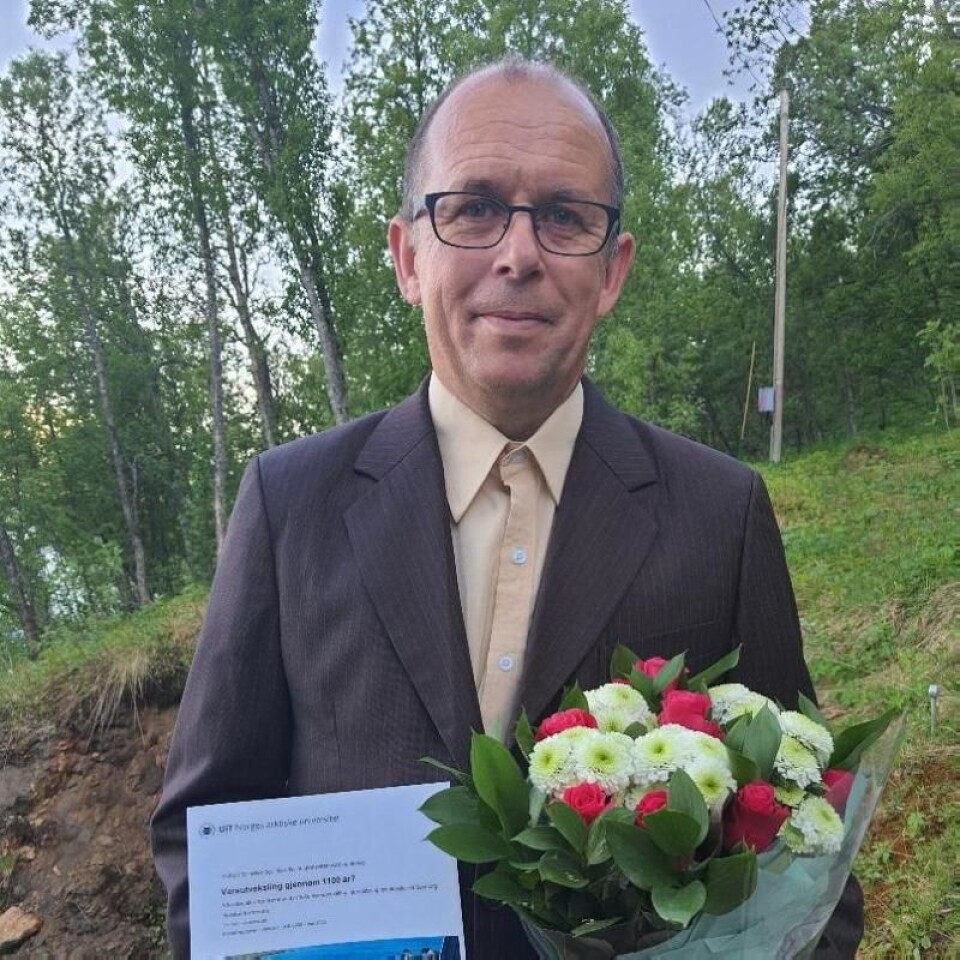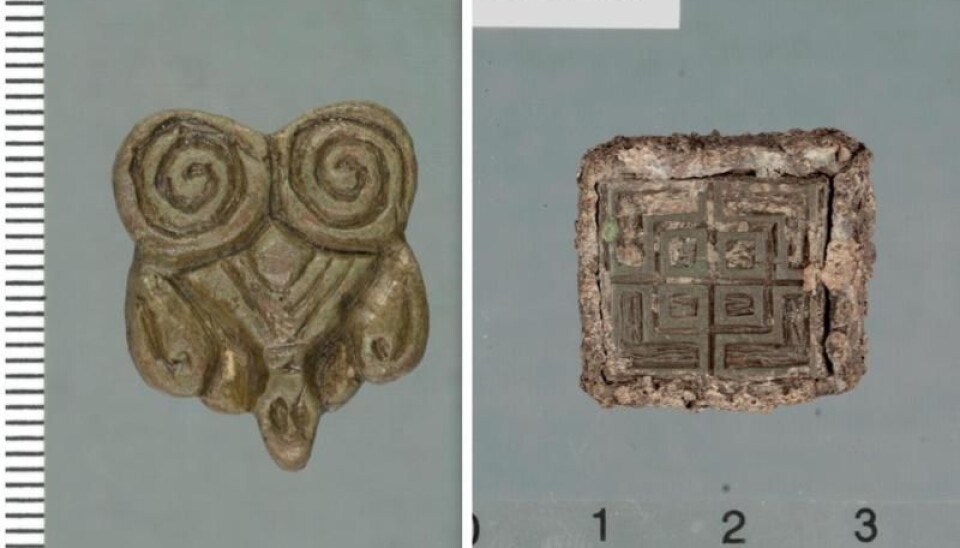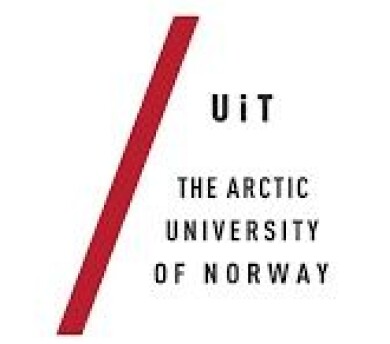This article is produced and financed by UiT The Arctic University of Norway - read more

Unknown Viking trading place discovered by master’s student
With the help of a metal detector, Tor-Kjetil discovered what appears to be the oldest trading place in Northern Norway to date. Now he’s switching jobs, making archeology a full-time engagement.
In his newly published archaeology master’s thesis delivered at UiT The Arctic University of Norway, Tor-Kjetil Krokmyrdal has shown that a trading place existed in the Viking Age at Sandtorg in Tjelsund, in Harstad Municipality.
Krokmyrdal found objects that can be dated all the way back to the 800s, which makes Sandtorg the first trading place we know of thus far in Northern Norway.
“This discovery means that from now on, researchers need to re-think how societies and trade functioned in this region in the Viking Age and the Early Middle Ages” archaeologist Marte Spangen says, who has been supervising Krokmyrdal in his thesis work.

We know from earlier that Vågan in Lofoten functioned as an important financial centre for Northern-Norway in the Middle Ages, but through objects found with a metal detector and other forms of analysis, Krokmyrdal has shown that trading was going on in Sandtorg as early as the 800s.
A curious name
How did a master’s student make such a discovery?
"I have worked on this for a few years", Krokmyrdal points out.
It’s been his hobby for several years to search for metals, alongside his full-time employment working with logistics at the postal company Post Nord.
He explains that it all started with a book many archaeologists are familiar with, Olav Rygh’s analysis of Norwegian farm names.
Sandtorg literally means «market or trading place at Sand». No archaeological evidence could actually prove this to be right, but it made Krokmyrdal curious.
At first, he did not find anything at Sandtorg, but it turned out that he was searching too low, and that the areas he was examining had been underwater during the Viking Age.
Once he moved higher in the terrain, the discoveries started rolling in.
“That’s when I signed up for the master programme in archaeology”, Krokmyrdal says.
Travelers spent the night at Tjelsund
Even as late as our near-past, strong currents would often force travelers to wait in Tjelsund before they could continue their journey. «Tjeld» is a reference to the verb «tjelde», which means to spend the night in or under the boat once it’s been pulled up on land.
The Sandtorg Farm lies by the strongest current and has probably been a natural place to stop for travelers. Its location and historical sources make it plausible that a chieftain at the farm Sand on the other side of the straits controlled the shipping going through the strong currents in Tjelsund, and might have demanded tariffs of those travelling through the straits as early as the Early Iron Age.
This developed into trade during the Viking Age, or as Krokmyrdal wants to call it, exchange of goods, a term that covers both the trade of money and the trading of goods and services. This gives the farm name Sandtorg meaning as «the market of the Sand Chieftain».

Imports from the great beyond.
The discoveries Krokmyrdal has made with his metal detector shows that the trade may have entailed repairs or building of ships, something that is also mentioned in the sagas in reference to the Sand Chieftains.
Krokmyrdal has found both jewelry, weights, coins, and so-called silver payment at Sandtorg.
He has also found objects that have been imported from the British Isles, Finland, and the continent. The merchants of the Hanseatic league as we know, traded a lot with countries abroad, and brought exotic objects all the way to Northern Norway.
“The most exotic thing I found was something of oriental origin – a kind of jewelry that has been used on a belt or a strap – that came north along with Arabic coins", says Krokmyrdal.
But what he reckons is his most important discovery, were the large amounts of iron that was lying near the beach during that time. This suggests that there must have been an iron forge, and maybe even a boatyard at Sandtorg.
Expected discovery
Krokmyrdal himself was not at all surprised with his discoveries, both because of the source that explained the meaning of the toponym, and other sources that suggested that this was a trading place. Peter Dass mentioned in his writing that the traders “sat closely together in Tjelsundet”.
“The location is also very strategic in terms of trade. The current at Sandtorg is really strong, and all the travellers would have to wait until the current turned before they could continue their journey", he explains.
What more natural then than to offer travelers a couple of goods and some time off in the form of “shopping”?
Thus, it looks like trading was being done at Sandtorg from the 800s and all the way up to the 1950s. There might have been more traders there earlier, but from the 1500s trade was regulated by laws that demanded those who ran trade be city residents. They were only to trade during summer and stay in town during winter. Since those times, there was only one trader around at Sandtorg.

Important discoveries
"It is not common for master’s students to do their own fieldwork, and even more uncommon that they bring forth their own material", says Krokmyrdal’s supervisor Marte Spangen, who is impressed by the master’s student.
Spangen believes that Krokmyrdal’s work is important in several ways; the discovery of a trading place in Viking Age Northern Norway, which includes the discovery of coins and objects a long way from home, means that researchers will have to re-think how societies and trade functioned in this region during the Viking Age and the Early Middle Ages.
She believes the discoveries will make people more aware of how useful metal detectors can be in discovering these kinds of localities that have not left any visible traces of cultural heritage on the surface.
"Krokmyrdal has also made specific discoveries that may change how we understand different networks of exchange and what kind of ironwork has been going on in Northern-Norway", Spangen says.
She adds that the traces of a possible boatyard is truly unique in a Norwegian context and something that requires further studies.
The examined area is a protected area, and Krokmyrdal has had special permission from the Directorate for Cultural Heritage to conduct metal detection in the area for his master’s thesis.
"It is quite remarkable for a master’s student to make such important discoveries", Spangen adds.
First job as an archaeologist
Krokmyrdal will now focus on his big passion full time. He is changing professions; from post services and logistics to archaeology, and his first job is starting this summer. He will be contributing to the great archaeological fieldwork that is taking place in relation to the new Hålogaland Road.


































